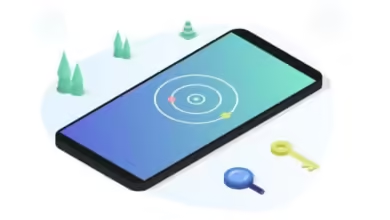The Rise of the Clickbaitosaurus: How a Relic of Internet Evolution Changed the Way We Click

Introduction
It roams the digital landscape, lurking on websites, social media feeds, and news portals. It strikes without warning, luring victims in with promises too enticing to resist: “You Won’t Believe What Happens Next!” or “10 Facts That Will Blow Your Mind!” It’s neither a dinosaur from the Mesozoic Era nor a mythical creature conjured from a distant fantasy world. No, this beast is the Clickbaitosaurus—a relentless force born from the need to capture clicks, and in doing so, it’s forever altered how we navigate the internet.
In this article, we’ll dive deep into the origin and evolution of the Clickbaitosaurus, explore its methods, and understand how it shaped modern-day content consumption. Whether you love it or hate it, there’s no denying this creature has made an indelible mark on the online ecosystem. Buckle up, because we’re going down the rabbit hole of clickbait, and trust me—you won’t believe what’s next!
The Origin of the Clickbaitosaurus: From Headlines to Digital Hooks
A Digital Evolution
The Clickbaitosaurus wasn’t born overnight. Its roots trace back to the early days of traditional media, where headlines were crafted to grab attention and sell newspapers. Remember the old “Man Bites Dog” trope? That was the clickbait of yesteryear. As soon as journalism and advertising realized that shocking, provocative, or curiosity-piquing headlines worked wonders, the seed was planted.
But when the internet exploded in the late 1990s and early 2000s, something shifted. With so much content being produced and shared online, websites needed to stand out. How could they ensure that users would click their links instead of their competitors’? Thus, the Clickbaitosaurus began to take shape, evolving into a sophisticated predator that thrived in the wild world of the web.
A Perfect Storm: The 24-Hour News Cycle
One of the key reasons for the rise of the Clickbaitosaurus was the advent of the 24-hour news cycle. With an insatiable need for fresh content, media outlets had to get creative—and quick! Suddenly, it wasn’t just about what you reported; it was about how you reported it.
Sensationalized stories became the norm, and soon after, the internet followed suit. Before you knew it, every webpage had headlines designed to pull you in with hyperbole and drama. And that’s exactly what the Clickbaitosaurus needed to thrive.
Traits of the Clickbaitosaurus: How to Spot One
The Clickbaitosaurus isn’t hard to identify—if you know what to look for. Here are a few classic traits that define this digital beast:
- Outrageous claims: Anything along the lines of “You won’t believe…” or “Shocking truth…” grabs your attention instantly.
- Incomplete statements: These prey on your curiosity by giving you half the information, forcing you to click to satisfy your need for closure.
- Numbers and lists: “5 Ways to…” or “10 Things You Didn’t Know…”—you’ve seen these everywhere, haven’t you?
- Emotional triggers: Words like “amazing,” “incredible,” or “heartwarming” are designed to stir up a response.
- Celebrity and scandal-driven hooks: Throw in a familiar name, and people will bite. Who doesn’t want to know what their favorite star has been hiding?
The Modern-Day Clickbaitosaurus
As the internet matured, so did the Clickbaitosaurus. What started as innocent curiosity-baiting became a sophisticated art form. These days, it’s often disguised in the form of “news articles,” video thumbnails, or even social media posts. It’s a master of shape-shifting, using every tool at its disposal to lure people into its click-hungry jaws.
Have you ever found yourself falling for headlines like “The Secret Hack Every Homeowner Needs to Know!” or “This One Trick Will Change Your Life”? If so, you’ve been ensnared by the Clickbaitosaurus.
Why Do We Fall for Clickbait?
If the Clickbaitosaurus is so obvious, why do we keep clicking? There’s more to it than just curiosity. Let’s break it down:
1. The Curiosity Gap
This is a well-documented psychological phenomenon where incomplete information creates an emotional need to fill in the blanks. When you see a headline like “You Won’t Believe What Happened Next,” your brain wants to close the loop. It’s practically irresistible!
2. FOMO (Fear of Missing Out)
Nobody wants to feel like they’re out of the loop, especially when it comes to juicy information. The Clickbaitosaurus capitalizes on this fear by making us feel like if we don’t click, we’ll miss something essential.
3. Dopamine and Instant Gratification
Our brains are wired to seek rewards, and that’s exactly what clickbait promises: an immediate payoff. Whether it’s entertainment, information, or a “life hack,” clicking that headline promises a quick dopamine hit.
4. The Power of Social Proof
When we see that an article has been shared thousands of times, our natural inclination is to assume it must be valuable. The Clickbaitosaurus thrives on this, racking up shares and clicks like a digital currency.
Clickbaitosaurus: Friend or Foe?
The Clickbaitosaurus isn’t universally despised—far from it. In fact, there are a few cases where clickbait serves a valuable purpose.
The Case for Clickbait
- Engagement: Let’s face it—people do click. Whether or not they’re satisfied with what they find is another story, but in a world where attention is the most valuable currency, getting people to click is a victory in itself.
- Virality: Clickbait headlines are tailor-made for going viral. The more outlandish the claim, the more likely people are to share it, especially when the content aligns with their beliefs or interests.
- Monetization: For businesses reliant on ad revenue, the Clickbaitosaurus is a necessary evil. More clicks mean more eyeballs, and more eyeballs mean more revenue. Simple as that.
The Downside: Why Clickbait Sucks (Sometimes)
- Disappointment: Clickbait is often a letdown. You click expecting to be wowed, only to find that the content doesn’t live up to the promise. Talk about a bait-and-switch!
- Misinformation: In the worst cases, clickbait headlines are not just misleading—they’re outright false. This spreads misinformation, and before you know it, half of the internet believes that some outrageous conspiracy theory is real.
- Erosion of Trust: When users encounter clickbait too often, they become jaded. Over time, trust in both the platform and the media outlet erodes.
Frequently Asked Questions (FAQs)
What is the Clickbaitosaurus?
The Clickbaitosaurus is a metaphorical creature representing the phenomenon of sensationalized and attention-grabbing headlines designed to lure users into clicking on content.
Why is clickbait so effective?
Clickbait plays on human psychology, particularly the curiosity gap, FOMO, and the brain’s desire for instant gratification. It taps into our emotional responses and promises quick rewards.
How can I avoid falling for clickbait?
Be more critical of headlines that seem too good to be true. Look at the source and consider whether the content will really deliver on its promise before clicking.
Is all clickbait bad?
Not necessarily. Clickbait can sometimes be a clever way to engage readers or viewers, but it becomes a problem when it misleads or spreads misinformation.
Conclusion
Love it or hate it, the Clickbaitosaurus is here to stay. It’s evolved alongside the internet, adapting to the needs and desires of a world where attention spans are shrinking and competition for clicks is fiercer than ever. While it may occasionally lead us astray, the Clickbaitosaurus is also a reminder of the power of curiosity and the lengths we’ll go to in order to satisfy it.



